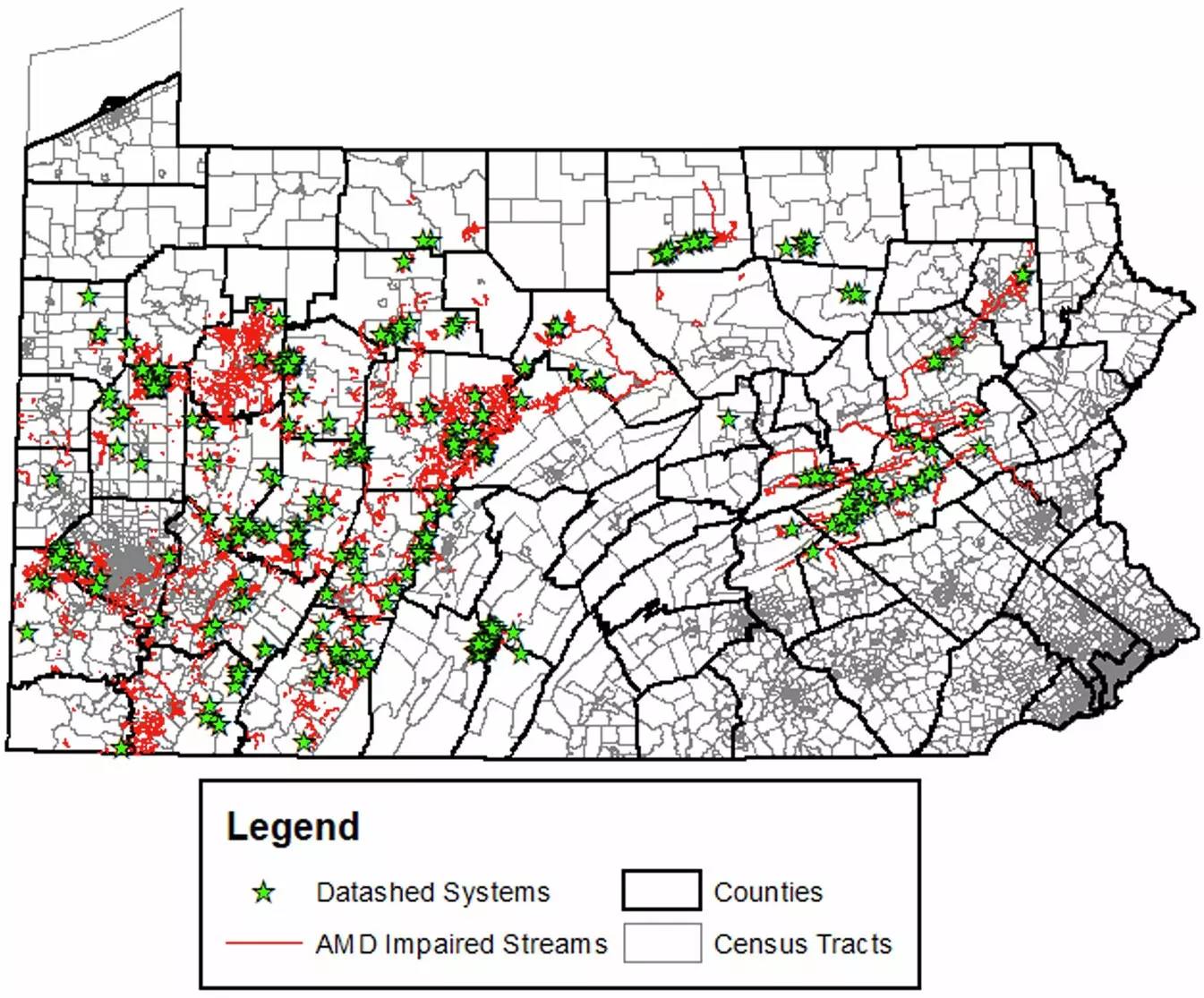Abandoned mines are a pervasive issue in Pennsylvania, leaving a toxic legacy that threatens local ecosystems, public health, and the socio-economic fabric of surrounding communities. These environmental scars, primarily characterized by acidic mine drainage, impose far-reaching consequences on the water quality of stream systems across the state, many of which are already stressed and impaired. Recent research from the University of Pittsburgh sheds light on both the progress made in combating this issue and the alarming insufficiency of current funding to effectively resolve it.
Despite the formidable challenges posed by abandoned mine sites, Pennsylvania has made notable strides through state and federal interventions aimed at treating mine drainage. Since the 1980s, more than 300 treatment systems have been established across the state, leveraging approximately $5,700 per kilometer per year to mitigate the adverse effects of mine drainage on water quality. These systems play a crucial role in protecting stream and river ecosystems, with data indicating they now safeguard over 1,000 miles of waterways. However, the harsh reality remains: nearly 5,600 miles of streams across Pennsylvania still suffer from significant impairment due to undeterred mine drainage.
The research highlights an urgent mismatch between the needs for comprehensive mine reclamation and the financial resources currently allocated. While the Infrastructure Investment and Jobs Act (IIJA) has designated $16 billion to abate abandoned wells and mines nationwide, the effectiveness of such spending remains sharply in question. Too often, investment is directed without a clear understanding of which communities stand to benefit most. In this context, the findings emphasize that marginalized communities, typically situated in economically disadvantaged regions, bear the brunt of these environmental challenges but receive the least attention in remediation efforts.
Pennsylvania’s miners’ legacy is not merely a historical footnote; it is a socio-economic crisis, particularly for the 2.4 million residents—representing 18.5% of the state’s population—whose lives are intertwined with impaired streams. The data reveals a stark contrast in economic profiles: communities affected by mine drainage often have household incomes that lag by about 30% when compared to their more fortunate counterparts. Furthermore, housing values within these vulnerable communities are approximately 50% lower, creating a vicious cycle of poverty exacerbated by environmental degradation.
In analyzing the data from 265 treatment systems, researchers observed significant improvements in water quality post-treatment, suggesting that these systems are effective in reducing the acidity of mine drainage. For instance, inflow water maintained a dangerously low pH of 4.3—akin to tomato juice—while treatment efforts elevated that figure to an average of nearly 6 pH. However, although these systems demonstrate technical efficacy, they are not a panacea. The outlay required to maintain these operations and expand remedial efforts is breathtaking—estimates suggest that a staggering $1.5 billion is necessary over the next 25 years just to keep pace with our existing infrastructure.
Moreover, an additional $3.9 billion will be required to address the spectrum of abandoned mine hazards that extend beyond drainage, such as sinkholes and open mine shafts. This staggering financial burden necessitates a strategic reallocation of resources and focused outreach to communities most impacted by this ongoing crisis.
The findings from the research conducted at the University of Pittsburgh are both illuminating and sobering. Undertaking the daunting task of comprehensive mine reclamation is not merely an environmental imperative but a socio-economic necessity aimed at revitalizing communities plagued by the lingering dangers of historical mining practices. More critical than ever, state and federal policies must evolve to prioritize equitable funding and actionable solutions grounded in data-driven insights to bridge the gap between environmental recovery and the socio-economic upliftment of vulnerable populations. By effectively integrating environmental justice into reclamation efforts, Pennsylvania stands not only to revitalize its waterways but also to empower the communities that depend on them for their future welfare.

